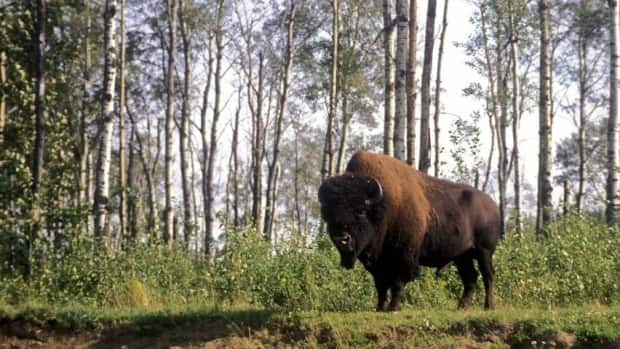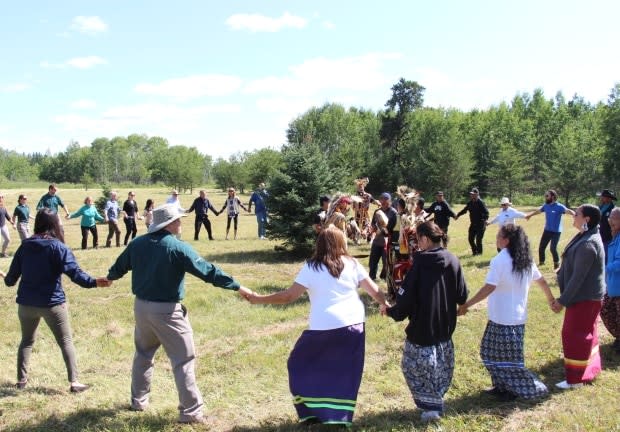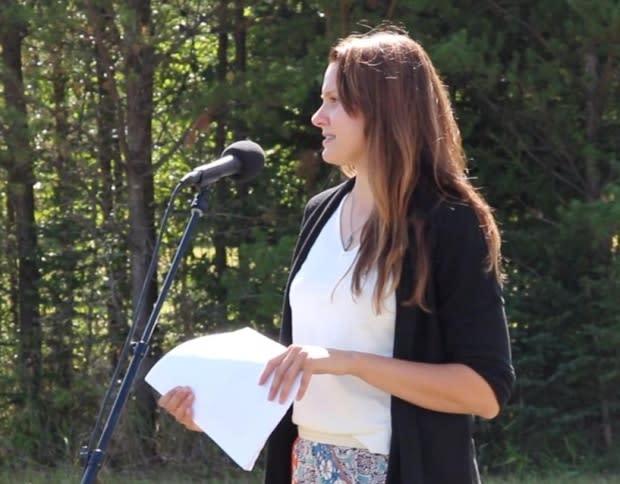Education, conservation efforts underway to preserve Sturgeon River bison herd
Bison numbers are declining in the Prince Albert National Park according to reports published earlier this year, but not all hope is lost.
That's because groups in Saskatchewan and beyond are organizing their own efforts to try and save the animals.
Sarah Schmid, General Manager of the Prince Albert Model Forest, was part of a Buffalo Treaty gathering hosted by the Mistawasis Cree Nation last Monday.
The Buffalo Treaty is an agreement between Indigenous communities in Canada and the United States created to preserve the animal's wild population in North America.

Bison were nearly hunted to extinction over a century ago but conservation efforts have gradually restored population numbers.
But Schmid said the decline in Prince Albert National Park is nothing like what happened over a century ago in North America.
"The way things are now, you can't really compare them to what was happening then, especially with the landscape being so open then and it's so restrained now," Schmid said.
The Sturgeon River herd consists of 120 animals, and they're allowed to roam outside of the National Park's boundaries but they're still living in a more limited environment than before.
Cultural connection a key to preservation
The Buffalo Treaty gatherings are designed to educate people about the history of bison — or buffalo as it's traditionally known in Indigenous culture — and its relationship to Indigenous culture.
"That's something that's really important to some of those Treaty 6 nations in Saskatchewan, is the connection and the cultural aspect," Schmid said.

She said the current conservation plan included the science, monitoring and management but it lacked the cultural component that the Buffalo Treaty gathering focuses on.
Schmid said representation from Parks Canada was in attendance at the gathering. From their presentation, Schmid said she got the feeling that group wants to start managing the herd in a different way, working with people in the area.
"Trying to do it themselves was not working," Schmid said. "They don't want to see the herd disappear because for them it's ecological integrity, it's their focus, what the bison bring to the land."
She noted the bison are also an economic opportunity for Parks Canada, because the animals do bring tourists to the Prince Albert National Park.
Educating about cultural hunting practices
New hunting practices could also be to blame for buffalo population declines and part of the Buffalo Treaty groups efforts is to connect people with traditional methods.
Schmid said she was told by elders who attended the gathering that the loss of cultural connection could be part of what led to two men being charged with overharvesting in 2017.
"They were hunting from vehicles, surrounding the herd, and that's something that is not done, traditionally," Schmid said.
"The concept of taking a bull instead of a breeding female, is something very traditional but a lot of people don't respect that anymore."
Passing torch to youth
Schmid said for the first time ever, the Indigenous Leadership Initiative is bringing a "Guardians" program to Saskatchewan.
The initiative bills itself as an Indigenous-led effort that empowers nations and communities to fulfil their cultural responsibilities to the land. The group runs projects in B.C., N.W.T., and Labrador.
Schmid said in Saskatchewan, the group will be working with youth aged 18-25 to teach them how to monitor bison from the Sturgeon River herd, located in the Prince Albert National park.

"They are the next generation, they are the next stewards of the land and we think we'll have a lot more success when, especially when [communities] are harvesting in the fall," Schmid said.
"We're going to have them on the ground and working with harvesters to get numbers of harvested bison because the park hasn't been able to collect them for the last year or two."
She said during the harvest, the youth guardians can direct harvesters to take only bulls and not breeding females to allow the animals to continue to procreate.
Schmid said the Guardians program gets underway in early September.


